This set saw the light of day in June 1997 and was
produced courtesy of Azerbaijan International and Amoco.
Azerbaijan is hardly seen as a frontline cultural bulwark.
However it merits attention as another enriching, though much neglected,
tributary for the world’s classical music. Here, across six CDs, we
can experience in one great and multiform swathe symphonic, ballet,
concerto, piano, opera and chamber music by fifteen Azerbaijani composers.
These include Uzeyir Hajibeyov, Muslim Magomayov, Fikrat Amirov, Gara
Garayev, Vasif Adigozal and Haji Khanmammadov. There are seventy-four
works in total. Ninety musicians, performing with the Azerbaijan State
Symphony Orchestra (Yalchin Adigozalov, conductor) and the Azerbaijan
State Chamber Orchestra (Yashar Imanov, conductor), were engaged in
this momentous enterprise.
We make an unusual start with the Holiday Overture
by Zulfugarov. This is a pleasant jolly piece - gaudily coloured
and little different from the many festive overtures being produced
throughout the Soviet Union. It makes for an unrelenting Azerbaijani
echo of the similar productions of Gliere, Khachaturian and Shostakovich.
This one celebrates the first space flight. The composer was a pupil
of Garayev whose Leyli and Majnun (related, I think, to the Antar
tale and to the same legend that prompted the Majnun symphony by Alan
Hovhaness) also appears here. Zulfugarov also has the symphony Sumgayit
to his credit. I am curious about hearing him in something with
greater gravitas than this overture.
Gara Garayev (also perhaps better known in the translation
Kara Karayev courtesy of various Melodiya and Russian Disc productions)
stands as one of Azerbaijan's most famous composers. He certainly attracted
recording activity from Melodiya in the days when attention was paid
to the eastern satellite republics of the Soviet Union. The grand tender
theme of the two lovers in Leyli and Majnun (7.20) stands as
eloquent testimony to Garayev's melodious voice. One wonders whether
Nino Rota knew this piece before writing the Romeo and Juliet film
music. This draws its bloodline from Tchaikovsky and early Sibelius.
On the same limb one can also find the soviet composer, Rostislav Boiko
(a couple of RDCD Russian Discs are desirable). Garayev is no soft touch;
much of this music is shudderingly dark and tragically tinted with the
presence of the turbulence of battle and the searing acid of loss. Garayev
wrote the 1952 ballet The Seven Beauties and there are three
symphonies and 24 preludes for solo piano.
Hajibeyov was born in the city of Shusha in the Karabakh
region, annexed by Armenia since 1992. His inventive Caravan is
a tone poem which is highly coloured and Ravelian in style. The material
is akin to Ippolitov-Ivanov and Rimsky in oriental mode.
Fikrat Amirov might be a name that some will recall.
He had a number of pieces championed by Stokowski - various mugams or
folk rhapsodies. He was drawn to the grandiloquently exotic. Once again
these two Amirov pieces are intensely coloured and moody. Amirov's name
is likely also to be familiar because a clutch of his orchestral works
ended up on two Olympias: Arabian Nights (complete ballet) OCD
578 A&B; Azerbaijan Capriccio for orchestra OCD 490; Gulistan
Bayaty Shiraz (symphonic mugam) OCD 490; Kurd Afshari (symphonic
mugam) OCD 490; Shur (symphonic mugam) OCD 578 A/B; Symphony
for String Orchestra OCD 578 A/B; Tale of Nasimi for orchestra
OCD 490. The second Amirov piece, Kurd-Afshari, is a symphonic
mugam - a vivid and free orchestral rhapsody around themes of folk character.
Vasif Adigozal is the father of the conductor Yalchin
Adigozalov who conducts the Azerbaijan State Symphony orchestra throughout
this series. There are four symphonies by Adigozal (1959, 1970, 1976,
1995) as well as a Violin Concerto, tone poems (Africa Struggles,
1962; Stages, 1968) and the Poem for four pianos and symphony
orchestra, 1982. His oratorio Karabakh Shikastasi won the State
Prize. There is plenty of chamber music and romantic songs as well as
film scores. This pupil of Garayev writes a turbulent piano concerto
- rather old-fashioned and highly romantic, blazing with colour and
exotic nationalistic elements. This heady soup may well remind you of
Poulenc (the casually sauntering piano theme that launches and closes
the first movement), Rachmaninov, Bax (especially in Winter Legends),
even Villa-Lobos. The adagio second movement is again highly romantic
with long themes for the violin - cinematic stuff. It is a pity that
this thirty minute structure was not tracked individually. The first
movement ends at 12.11; the second at 19.26. Martellato work for the
piano was a feature of the first movement and it returns in the finale
a grandiloquent echo of Bartók, Shostakovich and Khachaturian.
There is some remission from frenetic activity in a central pool of
calm but the perfervid striving romance soon reasserts itself.
Haji Khanmammadov's dignified and exciting Tar Concerto
is from 1968. It is the second of four such works: 1952, 1968, 1973,
1984. Apart from a Harp Concerto and various suites there are several
operettas including One Minute and All Husbands Are Good.
He conducted the Azerbaijan State Philharmonic 1966-68. Guliyev
is a virtuoso of the stringed Tar and an authority on its performance
practice and teaching - much as we might look to Julian Bream and John
Williams in the context of the guitar. Khanmammadov writes in a style
that leans more towards Western orthodoxy than for example Adigozal
or Azer Rezayev (see Chamber volume). He also is less prone than Adigozal
to piling on the instrumentation. The writing for orchestra is supercharged
and tumultuous with activity in the manner of Kabalevsky and Khachaturian.
There is less of the peppery sway than you may expect from say Terteryan.
The composer reconnects with the distanced strangeness of the Azerbaijani
countryside in the middle section of the first movement. This is dominated
by the solo Tar in the equivalent of a soliloquised cadenza. The second
movement starts at 13.03. The spare orchestral contribution is funereally
hollow and proceeds at a steady gait rising to defiant sorrow at 16.01.
The third starts at 17.45. This movement darts and pecks - full of exuberance
but devoid of excess detail.
The piano disc is presented by four pianists. Tamilla
Guliyeva plays Uzeyir Hajibeyov's gentle pastel sketch Sansiz (Without
You) the equivalent of the flowery stems of Billy Mayerl. Adigozalzade's
reading of Vasif Adigozal's 1992 Elegy is in much the same charming
and unassuming vein. Similarly for the two pieces by Rafig Babayev who
was killed in a bomb outrage on the Baku Metro. Ulviyya Valiyeva puts
Three Sketches in the Spirit of Vatto by Ismayil Hajibeyov through
its impeccably Bachian paces - fast and slow.
Murad Adigozalzade (a mainstay of this set) gives us
Gara Garayev's three preludes from 1950. These are gently emphatic romantic
pieces in the straightforward Western style we might associate with
the writing of the British pastoralists of the 1920s. That is until
we get to the third prelude. This is a surprisingly original piece:
part Bach, cakewalk and jazz strut. Garayev certainly had something
about him. The same pianist continues with eight brief solos by Amirov.
After the Hajibeyovs and Garayev, where folk material is either absent
or deeply subsumed into Western styles, these Amirov pieces are clearly
indebted to folk voices from the plains and mountains and countryside.
All the usual and enchanting paraphernalia of sinuous sway, dance and
rite are implicit in the music. It is no wonder that Stokowski took
to this music like a duck to water. The Toccata echoes with the
sounds of the Tar.
The pianist Elnara Hashimova is our guide through Vasif
Adigozal's Six Preludes of 1992. In these works the 'blue note'
pastoralism of Mayerl and even of John Ireland is ruffled with tart
rhythmic material bearing the stamp of Shostakovich. In the case of
the Fourth Prelude, early Rachmaninov is suggested or the iron-shod
martellato style we know from his own Fourth Piano Concerto and Bartók's
Allegro Barbaro. Some of this also made me wonder whether Kapustin's
piano concertos and solos had been heard in Baku. Hashimova rounds out
the disc with three of Garayev's winsome 1950 preludes. They are allotted
a single track; it would have helped if they had been listed by key
or number or title. This is a drawback of other parts of the set e.g.
in the Chamber volume.
The disc entitled Chamber is rather a collection of
music played by chamber orchestra than a collection of quartets, quintets,
duos etc. Much of it is lighter-toned and terse. For this disc the orchestra
changes to the Azerbaijan State Chamber Orchestra conducted by Yashar
Imanov. Hajibeyov's two pieces are vivid folk-style miniatures - sounding
at one moment like Warlock's antique writing, at another like Wirén
and at another like neo-classical Stravinsky, all coloured by eastern
modality. Amirov's four movement Nizami (1947) is for strings,
often muted, and chilly in the manner of late Frank Bridge but also
delicately dancing, vinegary and vivid.
Garayev is represented by three preludes for piano
with strings. This is graceful and directly poetic writing - easy to
appreciate yet with sufficient strangeness to make it memorable. Pianist
Adigozalzade takes delight in both the grace and the unmistakable Shostakovich
atmosphere of the third prelude.
We know the Tar soloist Ramiz Gulyiev and the plucked
sound of his instrument from the Tar concerto by Khanmammadov. Here
he is heard in the habanera ostinato-ed Garanfil (Carnation)
by Vasif Adigozal; folk culture meets 1970s 'grand hotel'. Azer Rezayev's
two pieces from 1994 strike me as truer to their raw soil-clinging roots.
Hasan Rezayev's Chahargah (1957) is more ellipitical, shuddering
and exotic at least to Western ears. Huseinli's The First Love (1952)
is extremely attractive with its romantic inclination and fine ethnic
feeling - the tar resounding strongly like a balalaika. Alizade's Jangi
(Warrior) skips and scuds along with strings providing rhythmic
'sting' over which the oboe of Oleg Grechko sings tartly.
On the operatic disc there are six tracks allocated
to Hajibeyov who wrote the first Azerbaijani opera, Leyli and Majnun
in 1908. This was the first mugam opera ever written. Mugam refers
to eastern modal music. There were to be six more operas after this.
The most famous is Koroglu (1938) of which five extracts are
included. While the Tar is included in the orchestra there are not too
many overtly Eastern touches. The music moves between a Bizet-like vivacity
(some bombast along the way) to Massenet's passionate operatic style
(evident in the two Nigar arias from Koroglu) sung by the impressively
secure and tempestuous Garina Karimova - a role she has made her own.
The most exotic aria is the Song of Khananda swayed or sung here
by the gorgeous-sounding Safura Azimi. The uproariously pipe-dominated
orchestral dance from Act 3 makes a good finale to this mixed suite.
The opera Arshin Mal Alan is represented by the Polovtsi-like
Askar's Aria sung by the innocent-voiced Ilgar Muradov.
Magomayev was born in Grozny now part of Russian Chechnya.
There are two extracts from his 1916 opera Shah Ismayil. The
overture and the Shah's aria are strong rhapsodic little pieces with
Tchaikovskian credentials. Almost twenty years later Magomayev wrote
his second major operatic work Nargiz which was premiered on
24 December 1935. Karimova sings Nargiz’s aria which approximates in
style to Tchaikovsky's Eugene Onegin but with eastern accents.
This is rather old-fashioned for 1935 but extremely attractive.
During the depths of World War II Garayev and Hajiyev
collaborated to produce Vatan (Motherland). It was written,
rather like Yuri Shaporin's war trilogy, and a host of other works,
to celebrate the desperate valour of the Soviet people. Mukhtar Malikov
is excellent in this with a heroic Puccinian ring to both his singing
in Mardan's aria and to Garayev's and Hajiyev's writing. I would like
to hear more of this opera. I wonder if there is a recording of the
complete article. Hajiyev also wrote five symphonies (1944, 1946, 1947,
1956, 1963), an oratorio for Stalin's 70th birthday (1949) and a symphonic
poem using the Azerbaijani modes of segah, chargah, shur and shushtar.
Hajiyev was a pupil of Alexandrov and Shostakovich.
Lastly we come to Sevil's aria from the opera
Sevil written in 1953 by Fikrat Amirov. His second opera Arabian
Nights was written in 1979. Karimova takes this aria which includes
extensive melisma as well as a radiant French verismo style akin to
that of Hajibeyov in Koroglu.
The words for these operas are not printed in the booklets
which, by the way, are in English only.
Ballet is represented by sixteen tracks divided seven
to Garayev and nine to Amirov. Garayev's Seven Beauties (1952)
based on the work of Nizami (as was his orchestral piece Leyli and
Majnun). The Waltz has some of the nervy hysteria of Prokofiev and
the stalking Procession march also smacks of that composer. However
the starry Delian Adagio with its Soviet style solo horn is the prize
here. The Most beautiful of all beauties sings in the shade rather
like Griffes' Pleasure Dome but Garayev's textures are clarified
and sing like Borodin and Khachaturian.
Six years later and Garayev probed at a deeper emotional
level although still within a language broadly recognisable as having
been set by Prokofiev (rather than Shostakovich). Here he takes the
book Path of Thunder by Peter Abraham and courageously bends
it into shape as a ballet. The plot relates to the liberation movement
in Apartheid South Africa. The dance rhythms are as alive as those that
skip through the Caribbean-set opera Our Man in Havana by the
late Malcolm Williamson and through the superb Alan Bush opera The
Sugar Reapers (or Guyana Johnny) - another exploration of
revolution against oppression. This is masterful music - highly poetic
(try tr.14 - Dance of the Girls with Guitars - with vibraphone),
scorched in places but not at all bombastic. There is no feeling of
an apparatchik going through the motions although he veers close once
or twice in the overweening victor's confidence of the finale.
Garayev has also written three symphonies, a violin
concerto, various orchestral tone poems, chamber and instrumental pieces
as well as 24 preludes for solo piano.
Amirov was born in the city of Ganja where his father
was a Tar player and singer. He studied at Baku's conservatory. He has
written prolifically. Amongst a host of orchestral works there are also
various musical comedies including Urakachanlar (Heart Stealers)
of 1944 and Gouzun Aydin (1946). Just as with Garayev, Amirov
avoids the sway of Shostakovich and instead revels in Azerbaijani and
Middle East melodic material and treatments. Ceremonial dance and dervish
rounds are presented without exotic instruments such as the Tar. The
struggle of Nasimi is brilliantly painted with screaming Tchaikovskian
strings and thudding percussion. Two years after Nasimi came
the opera-ballet Arabian Nights. This is also known as One
Thousand and One Nights. It was written with the librettist Nelya
Nazirova and the brothers Maksud and Rustam Ibrahimbeyov. This too is
much in keeping with the scorching oriental style of Nasimi without
being unduly 'ethnic'. The drum-punctuated and blaring 'Orgy' recalls
Khachaturian's motoric ballet music.
Favourite works include any of the pieces by Garayev,
Mardan's aria from Garayev and Hajiyev Vatan, Huseinli's
The First Love, Alizade's Jangi, Hajibeyov's Sansiz
and the music of Rafig Babayev.
If you have a taste for hyper-coloured music and enjoy
Borodin, Hovhaness, Ravel, Khachaturian and folk music of the mid-eastern
steppe then this set is certainly for you.
Rob Barnett
FURTHER BACKGROUND
http://www.azer.com/aiweb/categories/magazine/52_folder/52_articles/52_music.html
http://www.culture.az:8101/theatres/opera/deyat/deyat_e.htm#fami
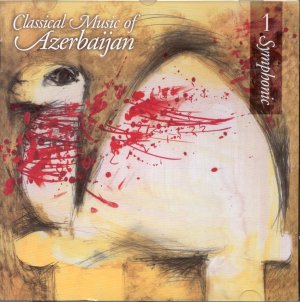
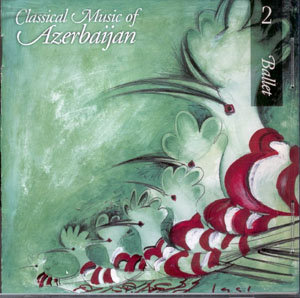
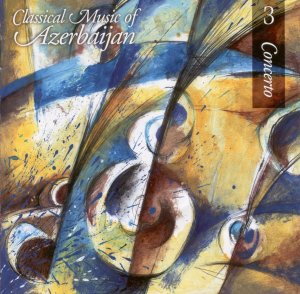
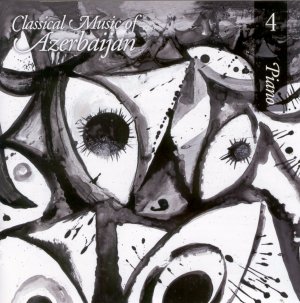
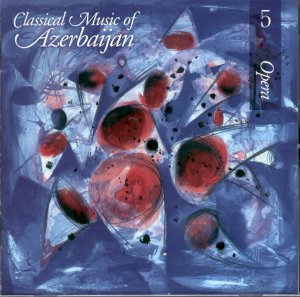
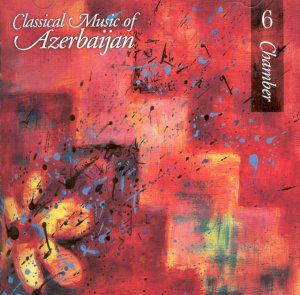
![]() Azerbaijan State Chamber
Orchestra
Azerbaijan State Chamber
Orchestra ![]() AZERBAIJAN INTERNATIONAL
AICD 1207 [circa 5 hours 49 mins]
AZERBAIJAN INTERNATIONAL
AICD 1207 [circa 5 hours 49 mins]